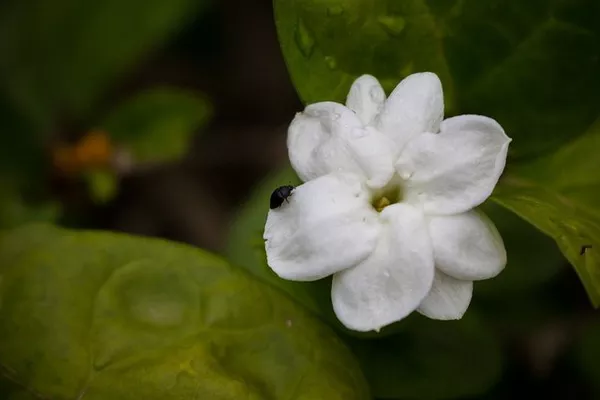Jasmine, with its delicate white blooms and intoxicating fragrance, has long been cherished for its beauty and symbolism across cultures worldwide. Belonging to the genus Jasminum, this flowering plant encompasses a remarkable array of species and cultivars, each possessing its own unique characteristics and uses. In this comprehensive guide, we delve into the rich tapestry of jasmine varieties, highlighting their distinguishing features, cultural significance, and horticultural traits.
Introduction to Jasmine Varieties
Jasmine, a member of the Oleaceae family, boasts over 200 species, distributed across tropical and temperate regions. Among the most renowned species is Jasminum officinale, commonly known as common jasmine or poet’s jasmine, prized for its sweet aroma and ornamental value. However, the world of jasmine extends far beyond this beloved species, encompassing a diverse array of cultivars and hybrids cultivated for their distinctive attributes.
1. Jasminum sambac: The Arabian Jasmine
Renowned for its captivating fragrance and glossy green foliage, Jasminum sambac, also known as Arabian jasmine or sampaguita, holds a special place in various cultural traditions. Originating from Southeast Asia, this species is revered in many Asian countries, where it symbolizes purity, love, and devotion. Its petite, star-shaped flowers emit a sweet, floral scent, making it a popular choice for perfumes, teas, and ceremonial garlands.
2. Jasminum polyanthum: The Pink Jasmine
Jasminum polyanthum, commonly referred to as pink jasmine or Chinese jasmine, captivates with its profusion of pink buds that unfurl into fragrant white blossoms. Native to China and Myanmar, this vigorous climber thrives in mild climates, adorning trellises, fences, and arbors with its cascading vines. Its sweet fragrance and abundant blooms make it a favorite for gardeners seeking a showy, scented display.
3. Jasminum grandiflorum: The Spanish Jasmine
Hailing from the Mediterranean region, Jasminum grandiflorum, also known as Spanish jasmine or royal jasmine, entices with its large, white flowers and rich, honeyed scent. This species is prized in perfumery for its aromatic essential oil, extracted from its blossoms through solvent extraction or enfleurage. With its elegant appearance and sensual fragrance, Spanish jasmine adds a touch of luxury to gardens and bouquets alike.
4. Jasminum auriculatum: The Indian Jasmine
Jasminum auriculatum, commonly known as Indian jasmine or juhi, exudes a heady aroma reminiscent of jasmine tea and tropical evenings. Native to India and Sri Lanka, this vine produces clusters of small, waxy flowers prized for their intense fragrance and decorative appeal. Indian jasmine holds cultural significance in Hindu rituals and weddings, where it symbolizes purity, auspiciousness, and eternal love.
5. Jasminum azoricum: The Lemon-scented Jasmine
Jasminum azoricum, also called lemon-scented jasmine or lemon jasmine, charms with its citrusy fragrance and dainty, white flowers tinged with yellow centers. Originating from the Azores archipelago, this evergreen shrub adds a refreshing twist to gardens and indoor spaces, filling the air with its uplifting scent. Lemon-scented jasmine is prized for its versatility, serving as a fragrant hedge, container plant, or aromatic accent in floral arrangements.
6. Jasminum multipartitum: The Star Jasmine
Jasminum multipartitum, commonly known as star jasmine or confederate jasmine, enchants with its profusion of star-shaped, white flowers and glossy green foliage. Native to South Africa, this twining vine is valued for its vigorous growth habit and drought tolerance, making it a popular choice for landscapes and trellises in arid climates. Star jasmine’s delicate blooms emit a sweet, jasmine-like fragrance, attracting pollinators and admirers alike.
Cultivating Jasmine
While jasmine varieties vary in their specific requirements, most thrive in well-drained soil, ample sunlight, and moderate humidity. Regular pruning helps maintain shape and encourage prolific flowering, while occasional fertilization supports healthy growth and bloom production. Mulching can help conserve moisture and suppress weeds, while providing a protective layer for the plant’s roots. With proper care and attention, jasmine plants can flourish and reward gardeners with their exquisite beauty and enchanting fragrance.
Conclusion
Jasmine, with its myriad varieties and intoxicating scent, captivates the senses and transcends borders, cultures, and generations. From the romantic allure of Arabian jasmine to the zesty aroma of lemon-scented jasmine, each variety offers a unique sensory experience and cultural significance. Whether adorning gardens, perfumes, or ceremonial garlands, jasmine continues to inspire awe and admiration, enriching our lives with its timeless beauty and evocative fragrance. As we celebrate the diversity of jasmine varieties, may we cherish and preserve these precious blooms for generations to come.

